Role & Duration
UX Designer
User Research, Interviews, Usability Testing, User Experience Design, Visual Design
Team:
1 Management/Communications Lead & Technical Coordinator
2 UX Researchers
2 UX Designers (me!)
Duration:
Sept 2021 – Dec 2021
Overview
Agricultural Modeling and Training Systems, LLC (AMTS) is a software company providing tools for optimizing animal nutrition and farm profitability. We worked with the software called Cattle Pro, which we refer to simply as "Cattle."
The development of Cattle has always prioritized functionality. But as features were added and added, users started complaining about the cluttered and overwhelming UI.
My team and I were tasked with conducting a user experience review of Cattle and providing evidence-based design recommendations.
First Steps
When breaking down the task, we determined the primary objectives to be:
- Canvas current users regarding needs and experience issues
- Identify key areas of improvement in software
- Streamline program task flows to have a more intuitive and efficient user experience
- Create visualizations for proposed design changes, e.g. mockups
Constraints & Mitigations
Working with a real company put us in circumstances entirely different from academic work. We had to anticipate potential issues and establish the protocol our team would follow in the case of a problem. The following details our main concern, among other issues such as OS incompatibilities and user interview coordination.
Ambitious project scope to update entire program UI and redesign efficient user experience in 4 months with limited knowledge of agricultural software & industry know-how
- Mitigation: Consistent communication with client to discuss goals that are realistic yet inline with client needs; conduct team investigations into industry standards & self-guided research
- Mitigation cont'd: Consult with academic advisor to adjust schedule + allocate workload (additional deliverables if scope has to be narrowed)
Project Management
Here we establish a highly structured timeline to foster team accountability, ensure productivity, and thorough documentation of our progress. There are 5 stages:
- Project Scope & Planning: Familiarize ourselves with software and industry to understand + empathize with users. Lay groundwork and expectations for team.
- User Research Preparation: Create protocol for contacting, recruiting participants, and obtaining consent. Draft interview script, including user tasks.
- User Research Implementation: Conduct usability interviews by assigned role in rotation: moderating / note-taking.
- Design: Categorize + analyze interview data. Follow principles of UI design when creating design recommendations. Iteration based on client feedback.
- Final Delivery: Written report on user trends, analysis, and mockups expected. Ensure safe data transfer. Presentation to showcase project journey and receive final feedback.
Meetings
Every week we had meetings via Zoom to debrief the client. We also met weekly with our academic project advisor to ensure we were on track to meeting the final deadline. As a team, we met several times a week to collaborate.
Work Breakdown Structure
We first made a WBS to get an overview of the project plan and anticipate the workload of each stage. Visualizing our steps helped to address our initial logistical concerns.
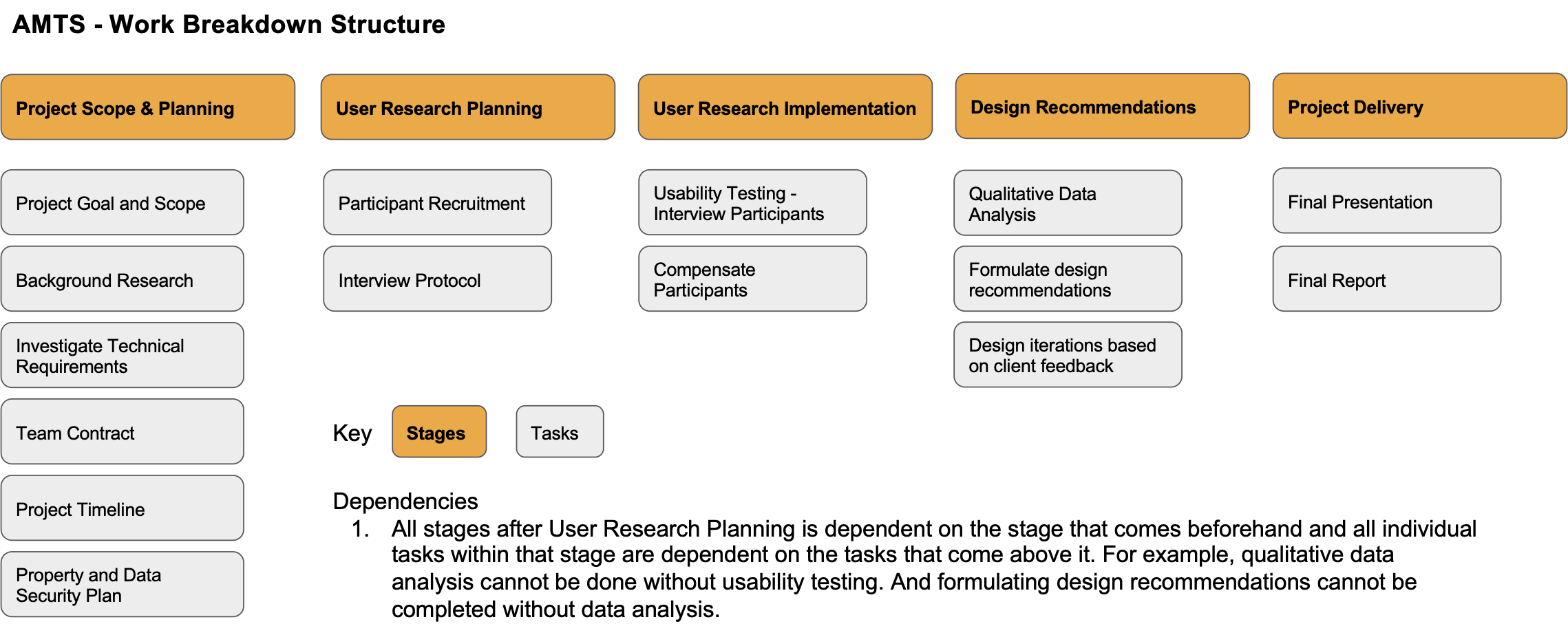
Project Schedule
Our project schedules were living documents used to track the dependencies of a stage and advance onto the next phase in a timely manner.
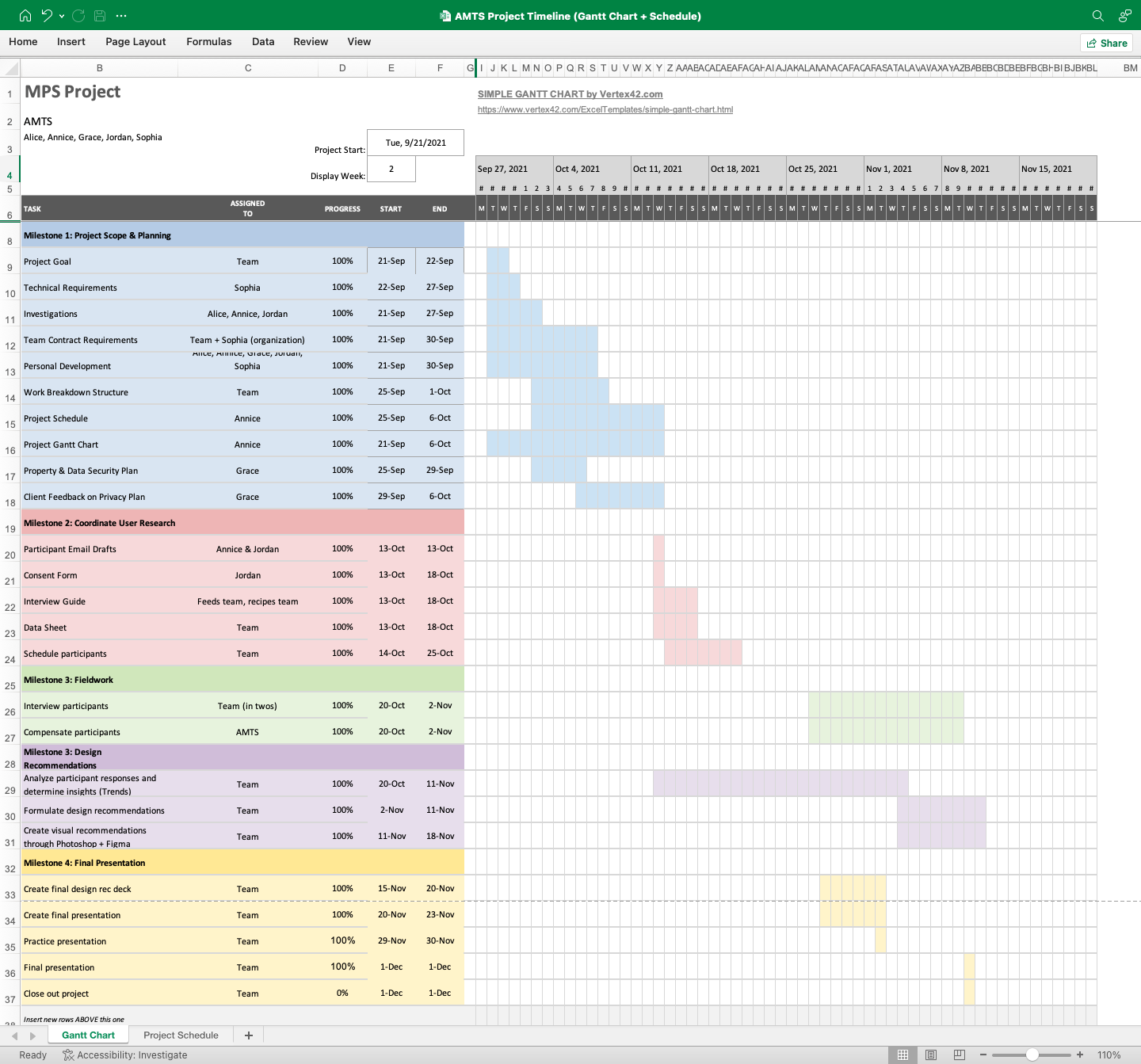
These documents were valuable for time management, but also provided transparency to our client.
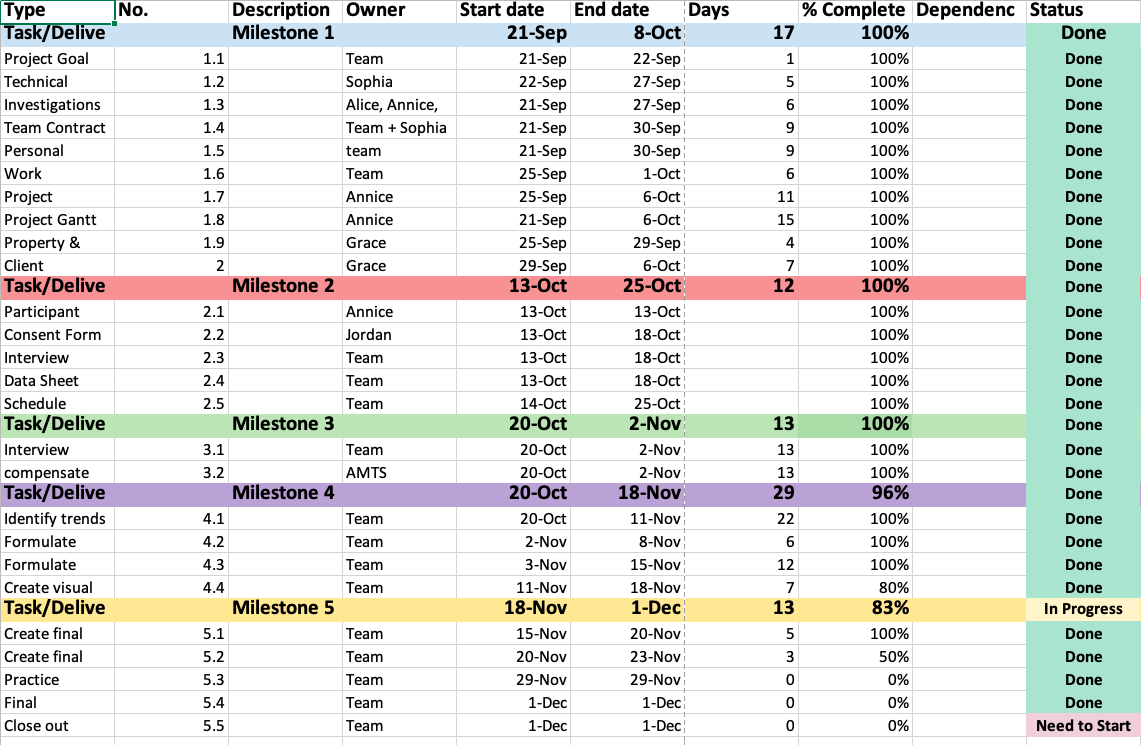
Progress and status was noted along with the team member in charge.
4-Box Reports
These are weekly updates we gave our client. They allowed us to give consistent, structured updates and facilitate conversation + feedback.
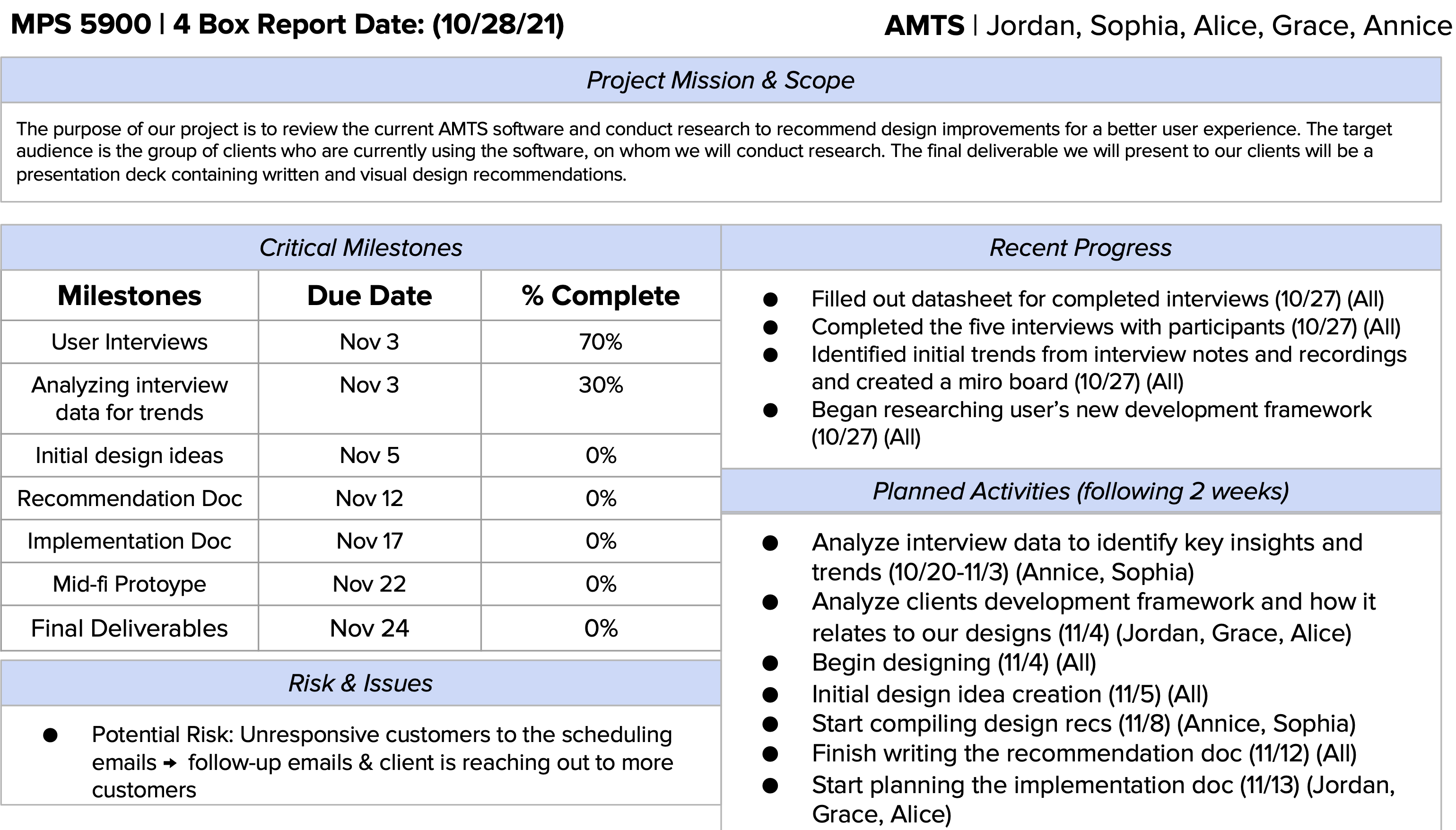
One of our 4-Box reports from the later half of the project.
User Research Methodology
To investigate the current experience of users, we created interview tasks regarding typical uses of the program, understanding of features, and overall level of satisfaction.
We conducted 7 interviews with users ranging from dairy farmers, cattle distributors, and feedbank manufacturers. Each interview was 1-hour long and conducted through Zoom.
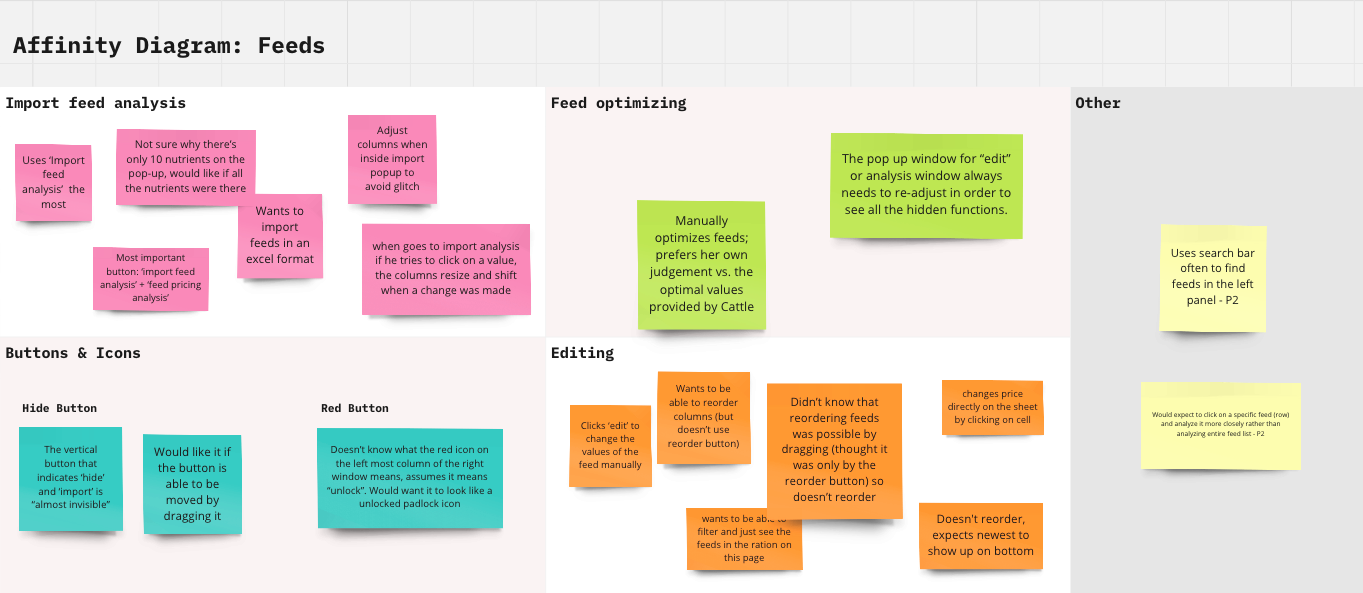
The affinity diagrams were divided into the two main areas of Cattle: the Feeds page and Recipes page.
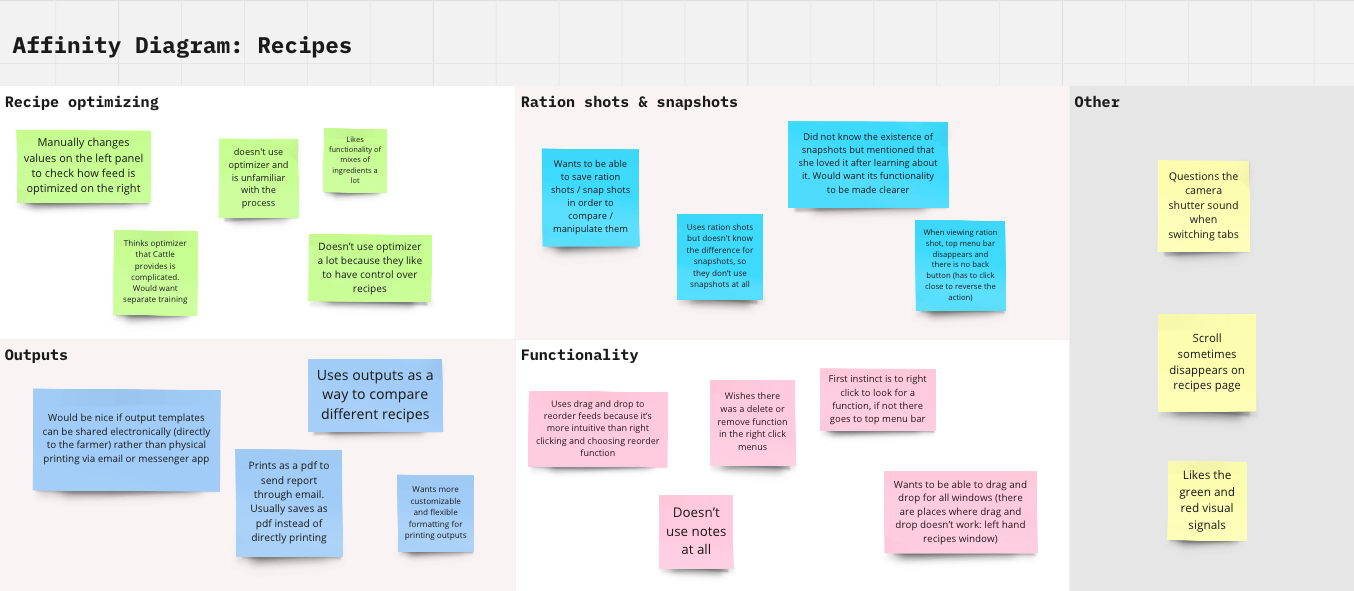
Diagramming synthesized the data into more coherent themes, but also highlighted commonalities in user issues/pain points.
Design Explorations
My team and I brainstormed design changes, and then discussed the magnitude of improvement and potential effect on the user experience.
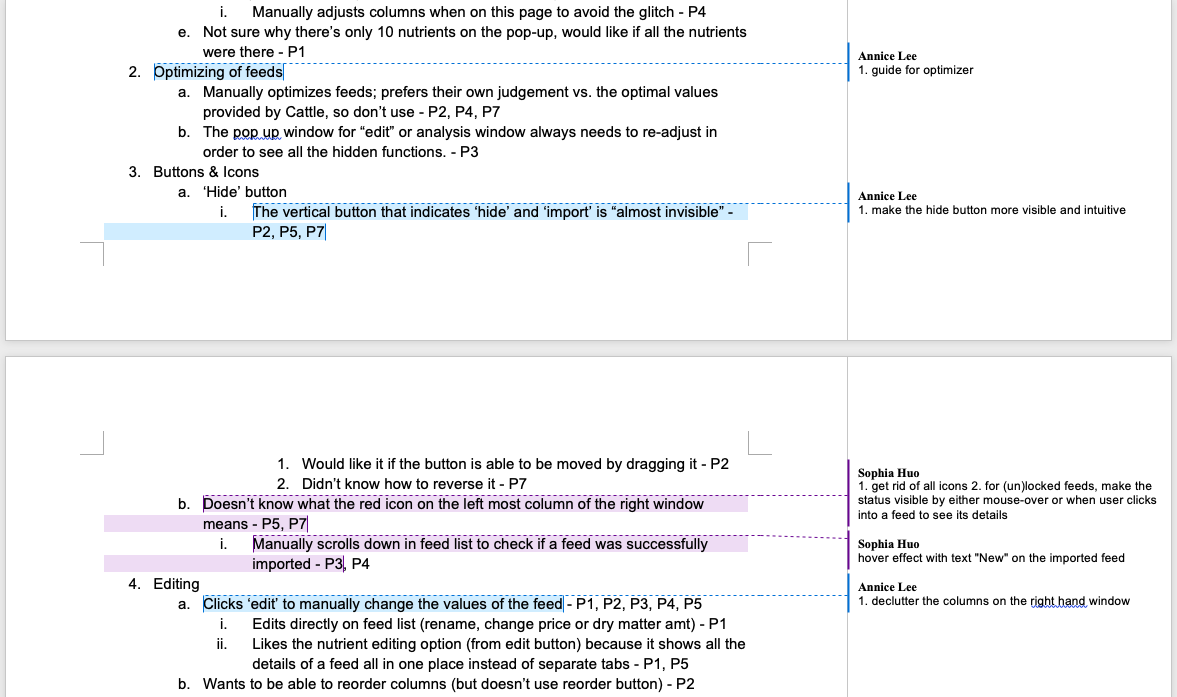
Mockups
An example of our design evaluation (findings are denoted by "F" and recommendations by "R").
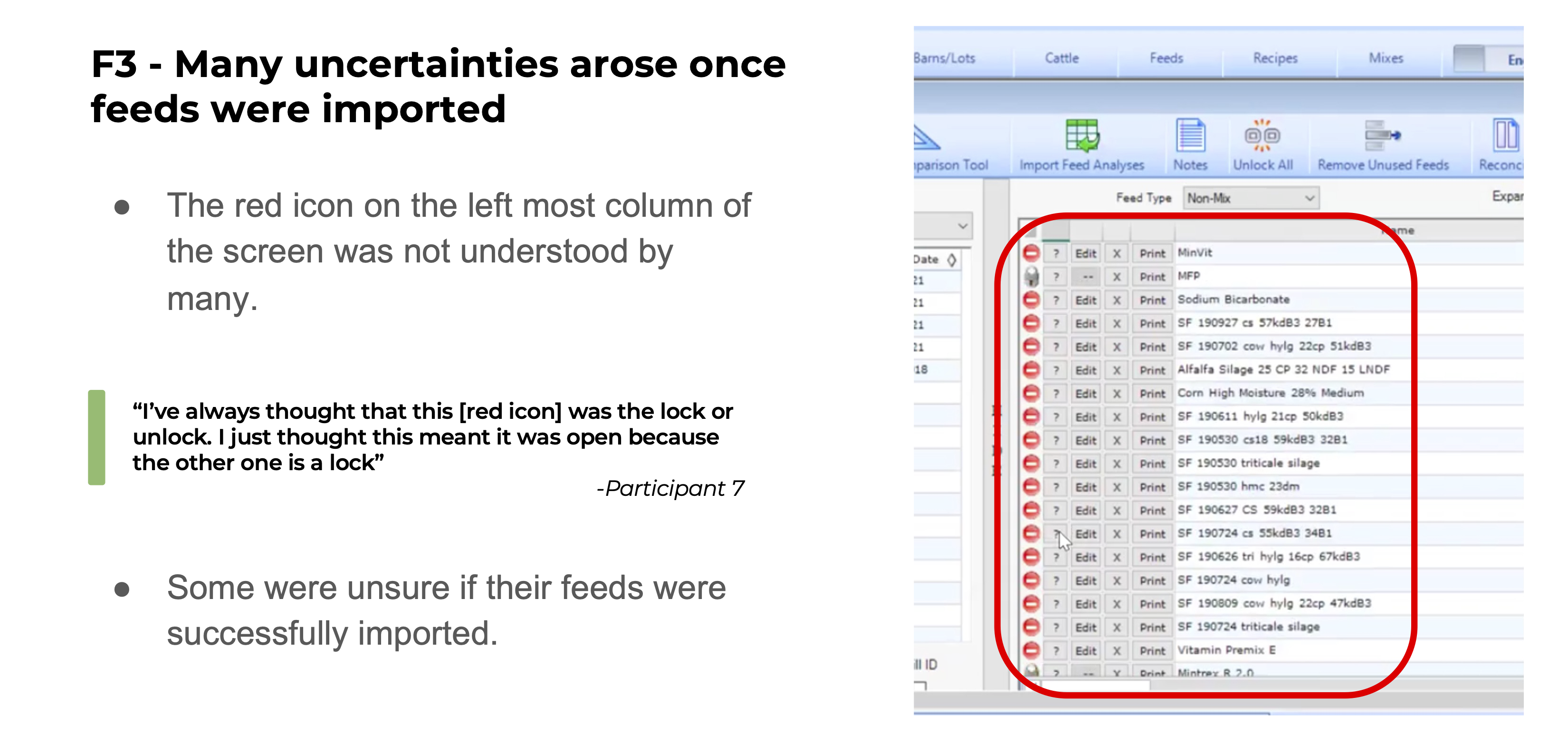
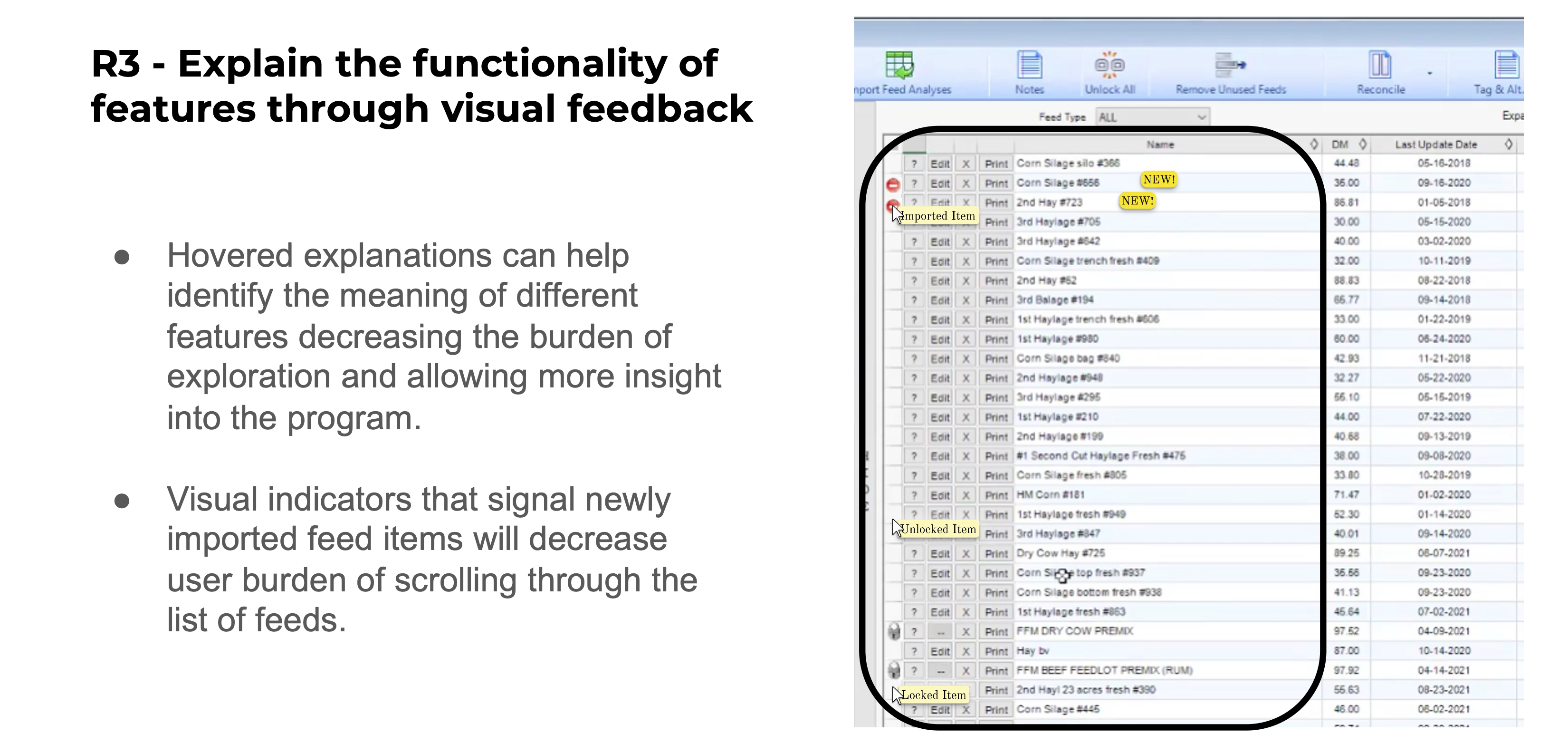
Final Thoughts
Working with an established company was an enriching experience. Challenges were simply opportunities to learn about the workings of a professional UX project, effectively communicate with different stakeholders, and adapt to sudden changes.
Scope. It wasn't easy to state the limits of our team when our clients had new requests and ideas, but through firm and careful redirection we managed a realizable yet challenging workload.
Future Work
Our clients developed a basic test version of Cattle with the proposed changes shortly after the conclusion of our project, so we followed up with our participants. We noted their level of satisfaction with this test version. A comparison of this rating with the same question we asked during the user interview phase showed a 40% increase in user satisfaction.
Usability testing. Although we tested the program with the changes implemented, we need to evaluate the extent of improvement to understandability and overall experience.
Widen user base. Our user group consisted of experienced professionals, but including new users allows the design revamp to benefit a larger audience.
UX review remaining pages of Cattle. To maintain visual consistency throughout the program, future work requires a UI design review.
